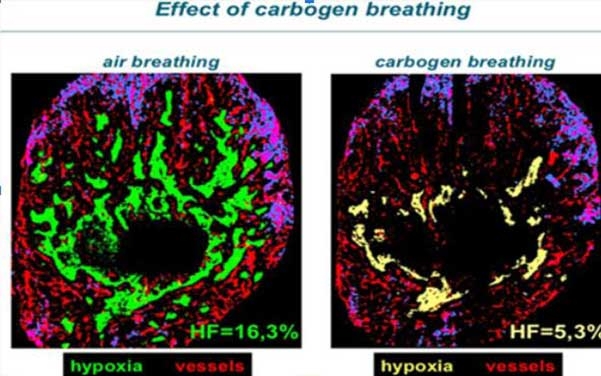America's Unexpected WW2 Panzer Annihilator
South Korea plunged into chaos with the sudden invasion from the North, an unexpected turn that threw the nation and its American allies into a harrowing retreat. Overwhelmed by the Communist onslaught, the Allied forces faced an army of tens of thousands of infantry, artillery, and, critically, tanks led by the Soviet-made T-34s, a tank that epitomized armored dominance on the battlefield.
In stark contrast, the only immediate armored response from the U.S. Far East Command came in the form of the World War 2-era M24 Chaffee. This compact light tank, tipping the scales at just over 18 tons and armed with a mere 75-millimeter gun, stood as the solitary option to confront the enemy's advance. Designed primarily for reconnaissance and infantry support, the Chaffee, with its lighter armor and armament, was not suited for head-on clashes with the Soviet behemoths.
On July 10, 1950, a decisive moment unfolded as a unit of Chaffees encountered the enemy’s T-34 tanks for the first time. Leveraging their agility, the Chaffee crews went on the offensive. The initial exchange of fire saw the Chaffees’ rounds bouncing harmlessly off the T-34s' armor, but the American tanks pressed on, maneuvering to get within effective range.
As the battle heated up, two Chaffees were hit and destroyed, a stark reminder of the risks they were taking. Then, in a moment teetering on the edge of disaster, as a T-34 lined up its shot on another Chaffee, an unexpected explosion changed everything.
When the smoke began to clear, it was revealed that this was the result of a cunning flanking maneuver. The Chaffee's maneuverability and the crew's tactical ingenuity had turned the tables. Emerging from behind the enemy lines, the flanking Chaffees had caught the T-34s off guard.
In the heat of battle, the Chaffee showed that age and power are not the sole determinants of effectiveness, revealing hidden aces through innovative tactics.
South Korea plunged into chaos with the sudden invasion from the North, an unexpected turn that threw the nation and its American allies into a harrowing retreat. Overwhelmed by the Communist onslaught, the Allied forces faced an army of tens of thousands of infantry, artillery, and, critically, tanks led by the Soviet-made T-34s, a tank that epitomized armored dominance on the battlefield.
In stark contrast, the only immediate armored response from the U.S. Far East Command came in the form of the World War 2-era M24 Chaffee. This compact light tank, tipping the scales at just over 18 tons and armed with a mere 75-millimeter gun, stood as the solitary option to confront the enemy's advance. Designed primarily for reconnaissance and infantry support, the Chaffee, with its lighter armor and armament, was not suited for head-on clashes with the Soviet behemoths.
On July 10, 1950, a decisive moment unfolded as a unit of Chaffees encountered the enemy’s T-34 tanks for the first time. Leveraging their agility, the Chaffee crews went on the offensive. The initial exchange of fire saw the Chaffees’ rounds bouncing harmlessly off the T-34s' armor, but the American tanks pressed on, maneuvering to get within effective range.
As the battle heated up, two Chaffees were hit and destroyed, a stark reminder of the risks they were taking. Then, in a moment teetering on the edge of disaster, as a T-34 lined up its shot on another Chaffee, an unexpected explosion changed everything.
When the smoke began to clear, it was revealed that this was the result of a cunning flanking maneuver. The Chaffee's maneuverability and the crew's tactical ingenuity had turned the tables. Emerging from behind the enemy lines, the flanking Chaffees had caught the T-34s off guard.
In the heat of battle, the Chaffee showed that age and power are not the sole determinants of effectiveness, revealing hidden aces through innovative tactics.
America's Unexpected WW2 Panzer Annihilator
South Korea plunged into chaos with the sudden invasion from the North, an unexpected turn that threw the nation and its American allies into a harrowing retreat. Overwhelmed by the Communist onslaught, the Allied forces faced an army of tens of thousands of infantry, artillery, and, critically, tanks led by the Soviet-made T-34s, a tank that epitomized armored dominance on the battlefield.
In stark contrast, the only immediate armored response from the U.S. Far East Command came in the form of the World War 2-era M24 Chaffee. This compact light tank, tipping the scales at just over 18 tons and armed with a mere 75-millimeter gun, stood as the solitary option to confront the enemy's advance. Designed primarily for reconnaissance and infantry support, the Chaffee, with its lighter armor and armament, was not suited for head-on clashes with the Soviet behemoths.
On July 10, 1950, a decisive moment unfolded as a unit of Chaffees encountered the enemy’s T-34 tanks for the first time. Leveraging their agility, the Chaffee crews went on the offensive. The initial exchange of fire saw the Chaffees’ rounds bouncing harmlessly off the T-34s' armor, but the American tanks pressed on, maneuvering to get within effective range.
As the battle heated up, two Chaffees were hit and destroyed, a stark reminder of the risks they were taking. Then, in a moment teetering on the edge of disaster, as a T-34 lined up its shot on another Chaffee, an unexpected explosion changed everything.
When the smoke began to clear, it was revealed that this was the result of a cunning flanking maneuver. The Chaffee's maneuverability and the crew's tactical ingenuity had turned the tables. Emerging from behind the enemy lines, the flanking Chaffees had caught the T-34s off guard.
In the heat of battle, the Chaffee showed that age and power are not the sole determinants of effectiveness, revealing hidden aces through innovative tactics.

0 التعليقات
0 المشاركات
1كيلو بايت مشاهدة










